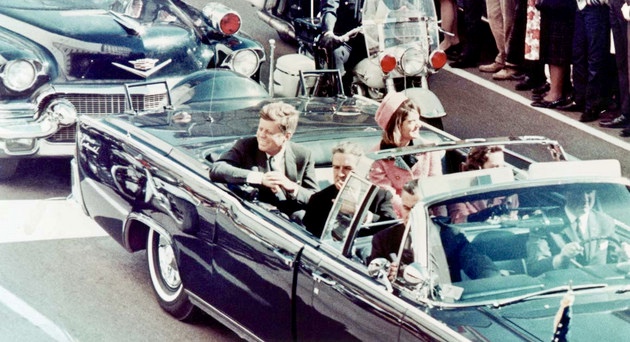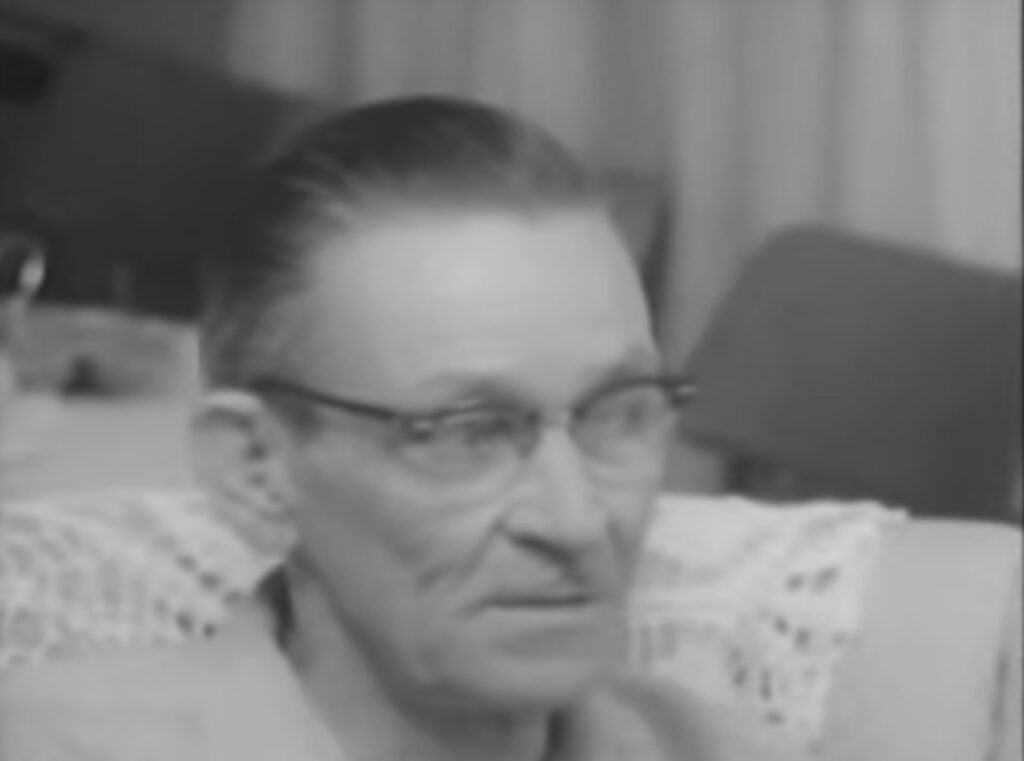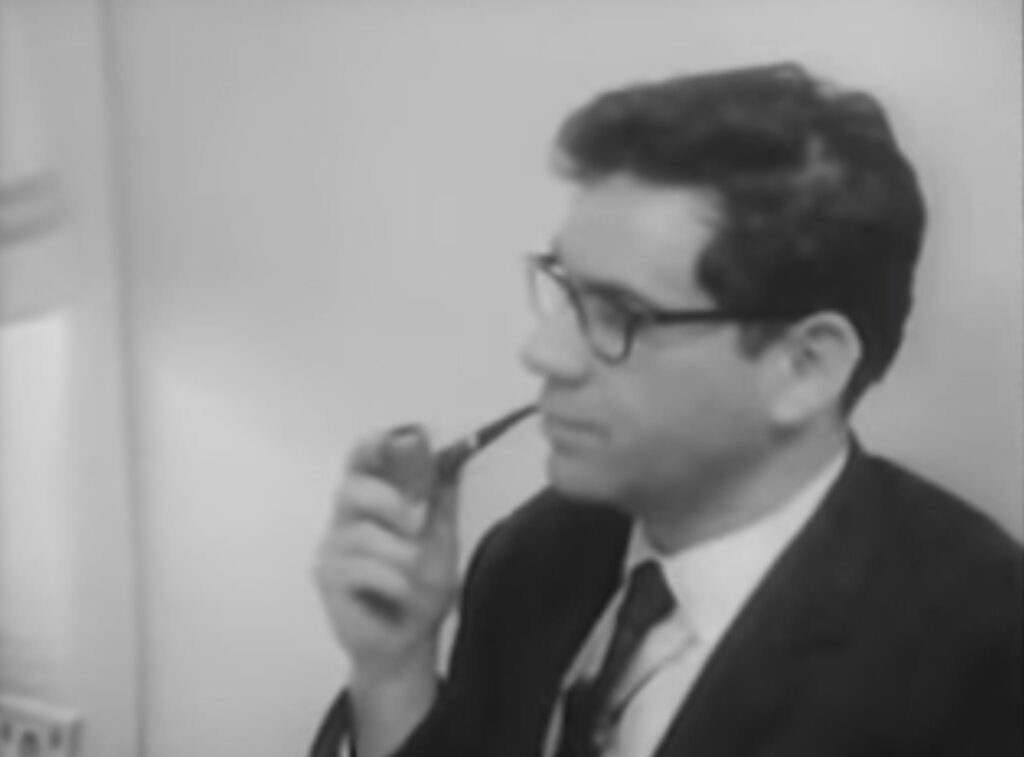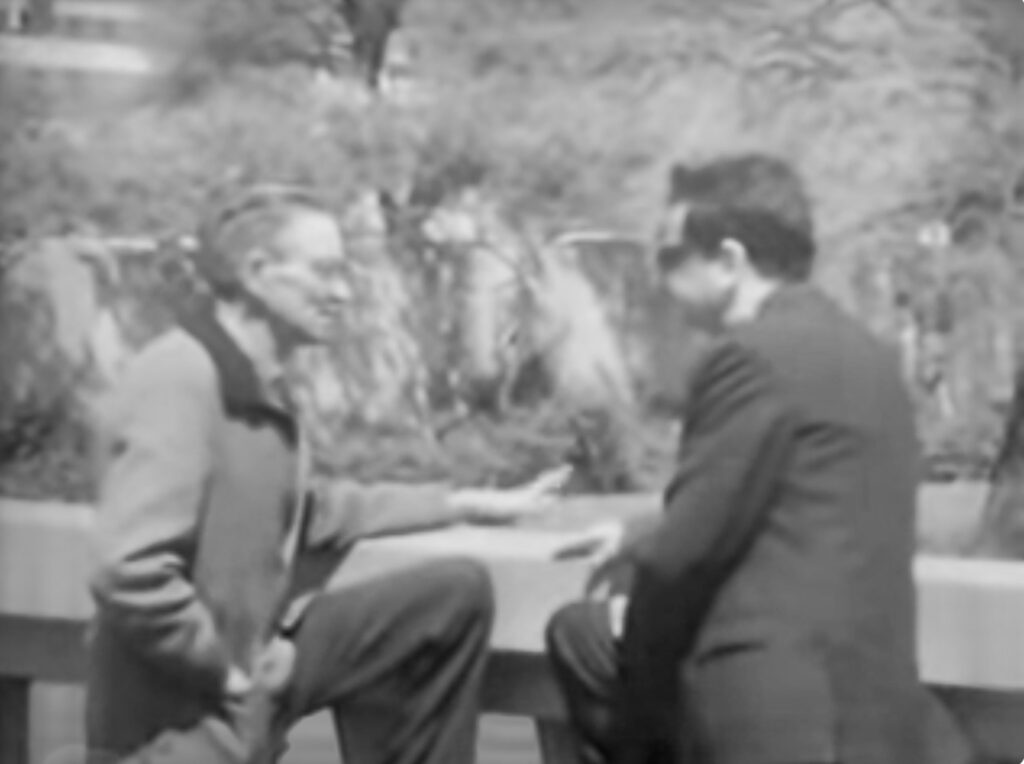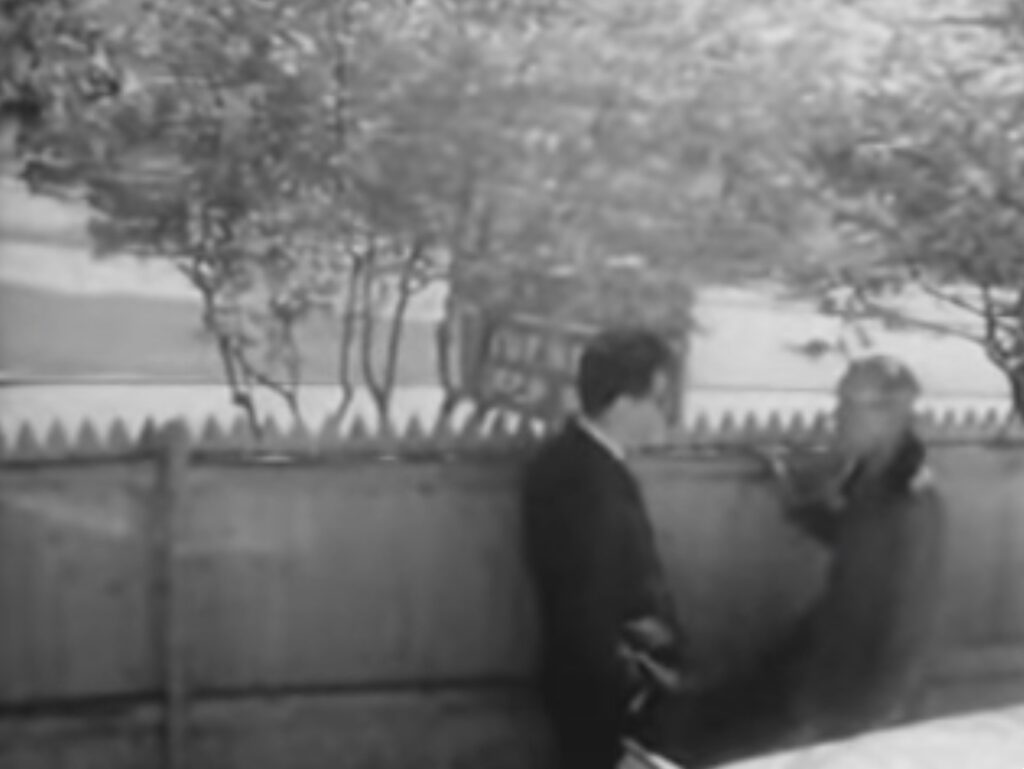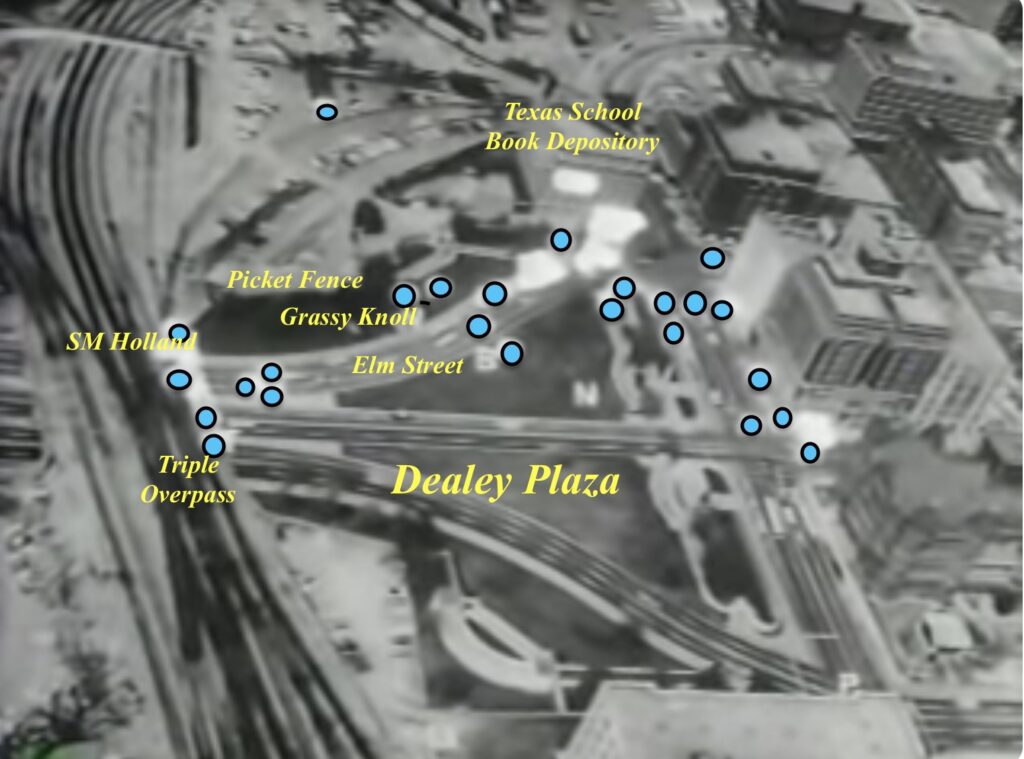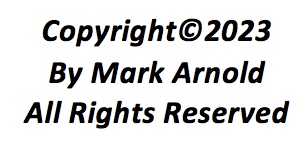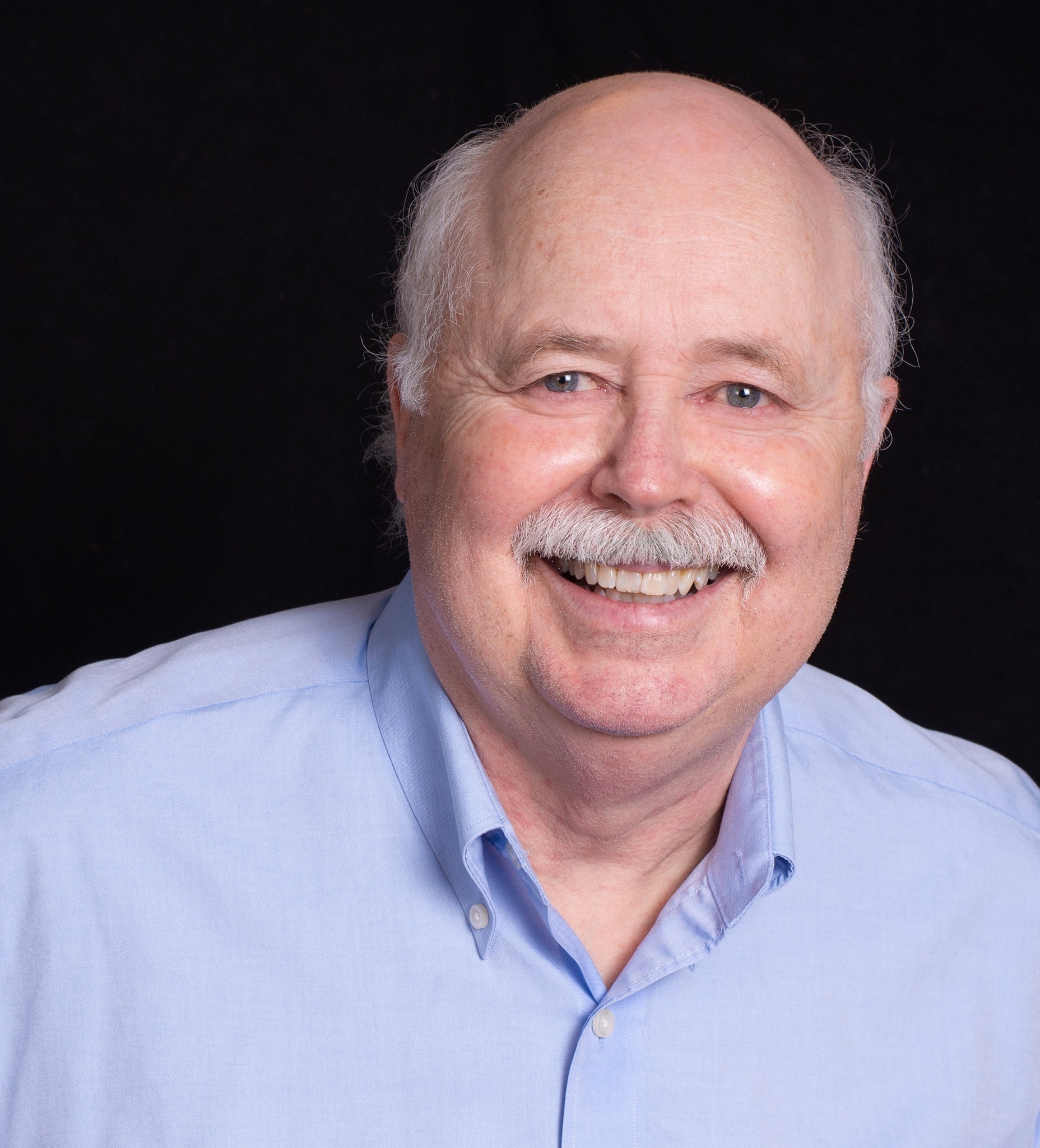Introduction
As noted in earlier installments of this series, November 22nd of this year will mark the 60th anniversary of the assassination of President John F. Kennedy. The Warren Commission, appointed by President Lyndon Johnson and created by Executive Order 11130 on November 29, 1963, was assigned with the task of investigating the assassination and the subsequent killing of the accused assassin (Lee Harvey Oswald), and to report its findings and conclusions to the President. Across the next 10 months the Commission conducted its investigation, and released its final report to the President on September 24, 1964. In its final report the Commission concluded that Oswald acted alone in murdering the President, and that no credible evidence suggests that the shots were fired from any place other than the Texas School Book Depository building. That statement is a falsehood. There is, in fact, a great deal of evidence, much of it credible, suggesting that shots came from locations and directions other than the Book Depository. Much of this evidence exists in the form of eyewitness accounts and testimony of those in Dealey Plaza that day; the medical personnel who treated the President at Parkland hospital; witnesses to the autopsy performed on President Kennedy on the evening of the 22nd at Bethesda Naval Hospital in Washington DC, as well as the bogus “official” autopsy photographs, depicting wounds in the President that do not correspond to those observed by the doctors at Parkland Hospital. The purpose of this series of articles is to make broadly known as much of this evidence as possible. That there was a conspiracy to assassinate the President is obvious once one confronts the evidence—the greater question is why was JFK killed. Sixty years on, it is too late to bring justice to those who perpetrated the killing. It is not too late, however, to understand the forces in our national security state behind those plotters, which still exert vast influence over our nation today. If we as Americans are ever to salvage our country from the effect of these forces, we must, at last, shed our naiveté and confront what really happened when Kennedy was assassinated on November 22nd, 1963.
It is in this spirit that I present to you the 4th installment of this JFK Evidence Series—the story of Dealey Plaza eye witness to the assassination, S.M. Holland.[1] I am presenting Holland’s story in the form of a verbatim interview conducted with him in 1966 by one of the earliest Warren Commission critics and JFK researchers, a criminal defense attorney named Mark Lane.[2] Mr. Lane is the author of several books on the JFK assassination, the first of which was the New York Times best seller “Rush to Judgement,” released in 1966. In “Rush to Judgement” Lane presents his critique of the Warren Report, exposing many its flaws and the slipshodness of its investigation. He followed his book with a series of filmed interviews with JFK assassination witnesses, corroborating what he reports in his book. Principle among these witnesses is S.M. Holland, and I am pleased to present this verbatim transcript of Mark Lane’s interview with him now. MA
__________________________
Mark Lane’s Interview with S.M. Holland
(conducted in 1966 and released as part of the 1967 film “Rush to Judgement,” Directed by Emile de Antonio and written by Mark Lane, linked below)
https://www.youtube.com/watch?v=IfRivH8G9tY&t=572s
Lane: Mr. Holland, on November 22nd (1963) where were you?
Holland: November the 22nd I was standing on top of the triple underpass waiting for the parade and the president’s car. I arrived about 11:45 or close to noon. Two policemen was [sic] talking to me and asked me—one of them asked me if I would come back up there and identify the people that had any business or had a right to be up there.
Lane: They would be railroad employees?
Holland: They would be railroad employees, and I told him I would.
Lane: What was your position with the railroad?
Holland: Track and signal supervisor for the Union terminal railroad. I put in 41 years of railroad service in the signal part.
Lane: Did you look in any particular direction when you heard the shots?
Holland: Yes, I looked over to where I thought the shot came from, and I saw a puff of smoke still lingering underneath the trees in front of the wooden fence. The report sounded like it came from behind the wooden fence, and a policeman throwed [sic] his motorcycle down in the middle of the street and run up the embankment with his pistol drawn. He was running towards that particular spot, and also another motorcycle policeman right behind him tried to ride up the embankment on his motorcycle, and it turned over about halfway up that embankment, and he got out; he got off his motorcycle and left it laying there and run on over to the fence with his gun in his hand.
Lane: Where do you think the shots came from?
Holland: Well, I know where that third shot came from.
Lane: Where did that shot come from?
Holland: Behind the picket fence, close to the little plaza.
Lane: Is there any doubt in your mind that that shot came from behind the picket fence?
Holland: There’s no doubt in my mind; there’s no doubt whatsoever in my mind, and the statement that I made in the sheriff’s office immediately after the shooting, and the statement that I made to the Warren Commission…I made it very plain there was no doubt in my mind, what there was definitely a shot fired from behind that picket fence. I made it plain to the Warren Commission, and I think I made the same statement in the sheriff’s office—there was a fourth shot.
Lane: On November 22nd, Mr. Holland, did you tell the Sheriff’s Office in an affidavit you signed that day that you saw a puff of smoke come from behind the picket fence?
Holland: I am certain I did.
Lane: Was it the general feeling, would you say, Mr. Holland, among the police officers and others at the moment that the shots were fired, that…at least one shot came from behind that wooden fence?
Holland: …about six or eight of us boys from the Union Terminal run around there to find some evidence that there was someone around there. Certainly the ones that was [sic] with me that run around the fence realize(d) what was happening. They told me the same thing that I told you, that there was definitely a shot fired, and they saw the smoke; we just all started running around that fence as a unit.
At this point in the interview Lane and Holland shift their location from being inside (most likely Holland’s house or apartment) to the triple overpass location in Dealey Plaza, where Holland and the other railroad men witnessed the assassination.
Lane: Is this the exact spot you were standing on November 22nd, Mr. Holland?
Holland: That’s correct. This is the exact spot that I was standing November the 22nd, waiting for the parade.
Lane: And where did you hear that third shot come from?
Holland: Right over about 20 or 30 feet from there, the end of that little picket fence.
Lane: And where was the smoke that you saw?
Holland: It drifted right out underneath those green trees, those two trees.
Lane: From behind the fence?
Holland: From behind the fence. It kinda hung there, just like a, for a few seconds…
Lane: And then what did you do?
Holland: I immediately, after the president’s car came underneath this overpass, four of us broke a run around this fence, to find out if we could see anybody leaving the area.
Lane: And we walk this way now, that you went on the 22nd?
Holland: We’ll walk that way now.
At this point Lane and Holland walked to their left, off the triple overpass and around to the rear of the picket fence, tracing Holland’s steps from November, 22nd.
Holland: We were trying to see what we could see, and…
Lane: This was the direction you walked on the 22nd?
Holland: This was the direction. Made this right turn (from the overpass to the area behind the fence)…jumped this steam line, this pipe; (a steam pipe cuts across the area behind the fence, between where Holland and the others entered the area and where they suspected the shooter fired from) one man right behind me jumped, and another one jumped right on top of him.
Lane: Fell on top of him?
Holland: Fell on top of him.
Lane: And we’re there more cars here on the 22nd than there are today?
Holland: They were bumper-to-bumper, just a sea of cars. You couldn’t hardly get through. We were jumping over the bumpers, over the hoods of the cars, to work our way to the spot where we saw the smoke and heard the shot. Then we came up to the wooden fence.
Lane: Mr. Holland, did you remain behind here for a while the police officers were searching the area?
Holland: Approximately 15 minutes, before I had to go back to my office. There was about 40 or 50 people around here searching.
Lane: What did you find here?
Holland: A lot of footprints behind this car, mud on the bumpers, and I looked around to see if I could find some empty shells, or any evidence of a shot being fired and bullet shell rejected from the gun. And this is where I saw the smoke from the third shot.
Lane: …drifting out around here?
Holland: Just drifting out underneath these trees.
Lane: And when that shot hit the president as he passed by this lamppost, did you see the effect of the shot upon the president?
Holland: Well, it knocked him over to his left, down in the car.
Lane: Away from here? (Indicating a direction to the President’s left, away from the picket fence)
Holland: Away from here.
Lane: Where was the car, the presidential limousine, in relation to this lamp post?
Holland: It’s just a little to the left of that lamp post we’re looking at.
Lane: …Mr. Holland, the Warren Commission published just a very small portion of your testimony, and used your testimony as proof that no shots could have come from behind the fence. Did they accurately and fairly use your testimony?
Holland: They are wrong, because in my testimony, and I made it very clear, that there was a fourth shot fired, and one of those shots came from behind that picket fence, and there’s no doubt in my mind, and never will be. Because I was on the spot, I saw the smoke; heard the report and saw the smoke behind that fence…and I don’t see how that they could doubt there was a fourth shot fired.
Lane: The vast majority of the witnesses who expressed an opinion as to the origin of the shots agreed with Mr. Holland, that the shot did come from behind the fence. These witnesses, as this picture shows, were positioned throughout Dealey Plaza. The Commission concluded that no credible evidence suggests that the shots were fired from any place other than the Texas School Book Depository building…Mr. Holland, you were on the overpass; you were probably in the best position of any witness on November 22nd. In your view, did the Warren Commission present all of the facts regarding the assassination of President Kennedy?
Holland: Let me say this: the Warren Commission, I think, had to report in their book what they wanted the world to believe when they read the Warren Commission. You know as well as I know, that everybody in the world was reading this Warren Commission, and it had to read like they wanted it to read. They had to prove that Oswald did it alone.
Lane: The Commission also stated, as you know Mr. Holland, that the same bullet which hit Governor Connally first struck President Kennedy. Based upon what you observed from that position just above the street on the overpass, is that possible?
Holland: No. No, that Warren Commission is in error on that because I was a [sic] eye witness to that, and I know that the same bullet that hit President Kennedy did not hit Governor Connally.[3] The first bullet, the President slumped over, and Governor Connally made his turn to the right and (then) back to the left, that’s when the second shot was fired and knocked him down in the floor board, and it would have been impossible for him to turn had the same bullet hit him that went through the President’s neck.
Lane: And did you see he see the effect of the next bullet which struck President Kennedy?
Holland: I saw the effects of the next bullet that struck the President, because it flipped him over, almost on his stomach, and his side of his head. And his head was laying on the edge of the seat, he was laying more on his stomach and his foot was hanging out over the edge of the car, upside down.
Mark Lane concludes his filmed interview with S.M. Holland at this point.
Epilog
Besides S.M. Holland, there were many more witnesses in Dealey Plaza that day who said that they heard a shot or shots coming from behind the picket fence on the grassy knoll. Though Holland did testify before the Warren Commission, most of the other witnesses, of which there were more than fifty, were never called. To conclude that there was no “credible evidence” of shots coming from any other location than the Book Depository, the Commission used a strategy of either ignoring those who claimed to hear shots from the fence line, or simply said they were mistaken. It’s apparent they were not interested in any information which conflicted with their pre-ordained explanation that Lee Harvey Oswald, acting alone, fired all three of the acknowledged shots (there were more shots fired than three) from the 6th floor of the Texas School Book Depository.
Sixty years have passed since the assassination. S.M. Holland and Mark Lane are dead now, as are most of the Dealey Plaza witnesses, the original Warren Report critics and JFK assassination researchers. So are the members of the Warren Commission, Lyndon Johnson, and those who plotted and carried out the assassination of President Kennedy. Nevertheless, despite the efforts of the former to illuminate them, our nation still labors under the lies spun by the latter and forced upon we, the people, wholesale. Pick up any high school history book and read what it says about Kennedy’s assassination; you’ll see what I mean. Our nation has come to a sorry pass, when the effort to get at the truth of what happened on that tragic day in Dallas has fallen to, not the established law enforcement apparatus whose job it was, but a handful of private citizens and researchers, unwilling to stand by and see our President gunned down in broad daylight and the subsequent intrusion of the national security state on our lives.
My final message to you in this piece is a simple one. We in the United States will ultimately have the form of government we deserve, whether a totalitarian regime or a democratic republic based on the principles of human rights embodied in the Constitution. To ensure that it’s the latter requires that a price be paid, and not just by some of us. That price could best be summed up as, constant alertness; constant willingness to fight back!
Men like S.M. Holland, Mark Lane, Roger Craig[4] and Ed Hoffman[5] have paid that price. I urge you to make the effort to inform yourself, and to join them!
[1] Sam M. (Skinny) Holland (1906-1975) was 57 years old in 1963 when he witnessed JFK’s murder. He passed away at the age of 69 in 1975, never having varied from his testimony of hearing a shot fired from the fence atop the grassy knoll and seeing the smoke drifting out among the trees on the knoll
[2] Mark Lane (February 24, 1927 – May 10, 2016) was an American attorney, New York state legislator, civil rights activist and Vietnam war-crimes investigator. He is best known as a leading researcher, author, and conspiracy theorist on the assassination of United States President John F. Kennedy. From his 1966 number-one bestselling critique of the Warren Commission, Rush to Judgement, to Last Word: My Indictment of the CIA in the Murder of JFK, published in 2011, Lane wrote at least four major works on the JFK assassination and no fewer than ten books overall.
[3] The single-bullet theory, sometimes known as the magic-bullet theory, was introduced by the Warren Commission in its investigation of the assassination of U.S. President John F. Kennedy to explain what happened to the bullet that they say struck Kennedy in the back and exited through his throat. Given the lack of damage to the presidential limousine consistent with it having been struck by a high-velocity bullet, and the fact that Texas Governor John Connally was wounded and was seated on a jump seat in front of the president, the Commission concluded they were likely struck by the same bullet. Generally credited to Warren Commission staffer Arlen Specter (later a United States Senator from Pennsylvania), this theory posits that a single bullet, known as “Warren Commission Exhibit 399″ or “CE 399”, caused all the wounds to the governor and the non-fatal wounds to the president, which totals up to seven entry/exit wounds in both men.
[4] Please see JFK Evidence Series #2 The Story of Dallas County Deputy Sheriff Roger Craig
[5] Please see JFK Evidence Series #1 Eyewitness to Tragedy-The Ed Hoffman Story
